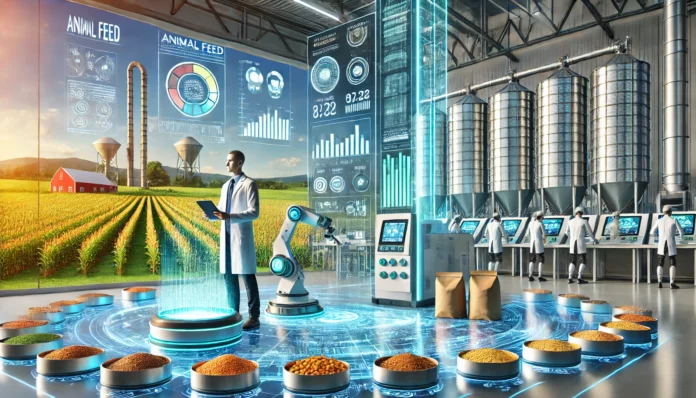
Animal feed technology is rapidly evolving, driven by the need for sustainable practices, improved livestock health, and enhanced productivity. Innovations in this field are addressing challenges like resource scarcity, environmental impact, and rising global demand for animal protein. This article explores the top 10 innovations reshaping the animal feed industry.
1. Precision Nutrition
Precision nutrition tailors feed formulations to meet the specific needs of different animal species, breeds, and production goals.
- Key Features:
- Customized nutrient profiles based on age, weight, and production stage.
- Reduction in overfeeding and nutrient wastage.
- Benefits: Improves feed efficiency, reduces costs, and minimizes environmental impact.
2. Probiotics and Prebiotics
Incorporating probiotics and prebiotics into animal feed enhances gut health and immunity.
- Key Features:
- Probiotics: Live beneficial bacteria.
- Prebiotics: Non-digestible fibers that feed beneficial gut bacteria.
- Benefits: Reduces reliance on antibiotics, improves digestion, and promotes growth.
3. Alternative Protein Sources
Innovations in alternative proteins are addressing the need for sustainable feed ingredients.
- Examples:
- Insect-based proteins (mealworms, black soldier fly larvae).
- Algae and single-cell proteins.
- Fermented plant proteins.
- Benefits: Reduces dependency on traditional ingredients like soybean and fishmeal, lowering environmental impact.
4. Enzyme Technology
Feed enzymes break down anti-nutritional factors in feed ingredients, improving digestibility and nutrient absorption.
- Examples:
- Phytase: Improves phosphorus availability.
- Xylanase and protease: Enhance energy and protein utilization.
- Benefits: Boosts feed efficiency and reduces waste.
5. Internet of Things (IoT) in Feed Management
IoT technology enables real-time monitoring and optimization of feed delivery systems.
- Key Features:
- Sensors to track feed intake and animal behavior.
- Data analytics to optimize feed schedules and quantities.
- Benefits: Reduces feed wastage and improves livestock productivity.
6. Sustainable Feed Formulations
Sustainability-focused feed formulations minimize environmental impact and improve resource efficiency.
- Key Features:
- Inclusion of upcycled food industry by-products (e.g., brewer’s grains, bakery waste).
- Use of climate-resilient crops.
- Benefits: Reduces greenhouse gas emissions and supports circular economy practices.
7. 3D Printing of Feed
3D printing technology is being explored to create customized feed shapes and nutrient profiles.
- Key Features:
- Precision mixing of nutrients.
- Feed shapes optimized for specific species.
- Benefits: Improves feed intake and nutrient delivery.
8. Functional Feeds
Functional feeds are enriched with bioactive compounds to target specific health outcomes in animals.
- Examples:
- Omega-3 enriched feeds for aquaculture.
- Feed with added antioxidants to reduce oxidative stress.
- Benefits: Enhances animal health and product quality (e.g., meat, milk, eggs).
9. Blockchain for Feed Traceability
Blockchain technology ensures transparency and traceability in the animal feed supply chain.
- Key Features:
- Tracks ingredient origins and production processes.
- Provides verifiable records for feed safety certifications.
- Benefits: Builds consumer trust and ensures compliance with regulatory standards.
10. Automated Feed Mills
Automation in feed mills streamlines production processes, improving efficiency and consistency.
- Key Features:
- Robotic systems for ingredient handling and mixing.
- AI-powered quality control systems.
- Benefits: Reduces operational costs and ensures consistent feed quality.
Challenges in Animal Feed Innovation
Despite these advancements, the industry faces challenges such as:
- High Costs: Initial investments in new technologies can be significant.
- Regulatory Hurdles: Ensuring compliance with stringent feed safety standards.
- Market Acceptance: Encouraging widespread adoption of innovative feed products.
Future Outlook
The future of animal feed technology lies in integrating sustainability, precision, and innovation. As global demand for animal protein continues to rise, these advancements will play a critical role in meeting the needs of livestock producers while minimizing environmental impact.



